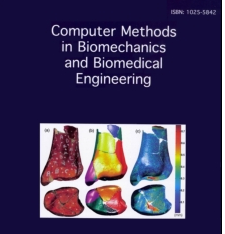Paper Accepted (February 2017)
Our most recent work leveraging real-time visual biofeedback of propulsive force measurements during walking has been accepted for publication in the Journal of Biomechanics.

Browne MG and Franz JR. The independent effects of speed and propulsive force on joint power generation in walking (In press).
Abstract. Walking speed is modulated using propulsive forces (FP) during push-off and both preferred speed and FP decrease with aging. However, even prior to walking slower, reduced FP may be accompanied by potentially unfavorable changes in joint power generation. For example, compared to young adults, older adults exhibit a redistribution of mechanical power generation from the propulsive plantarflexor muscles to more proximal muscles acting across the knee and hip. Here, we used visual biofeedback based on real-time FP measurements to decouple and investigate the interaction between joint-level coordination, whole-body FP, and walking speed. 12 healthy young subjects walked on a dual-belt instrumented treadmill at a range of speeds (0.9 – 1.3 m/s). We immediately calculated the average FP from each speed. Subjects then walked at 1.3 m/s while completing a series of biofeedback trials with instructions to match their instantaneous FP to their average FP from slower speeds. Walking slower decreased FP and total positive joint work with little effect on relative joint-level contributions. Conversely, subjects walked at a constant speed with reduced FP, not by reducing total positive joint work, but by redistributing the mechanical demands of each step from the plantarflexor muscles during push-off to more proximal leg muscles during single support. Interestingly, these naturally emergent joint- and limb-level biomechanical changes, in the absence of neuromuscular constraints, resemble those due to aging. Our findings provide important reference data to understand the presumably complex interactions between joint power generation, whole-body FP, and walking speed in our aging population.

 Our ongoing work combining virtual reality and optical flow perturbations to investigate mechanisms governing walking balance control has led to a recently accepted publication in the journal
Our ongoing work combining virtual reality and optical flow perturbations to investigate mechanisms governing walking balance control has led to a recently accepted publication in the journal 

 Our work using motion-capture guided ultrasound imaging to measure dynamic variation in the Achilles tendon moment arm in vivo during walking has been accepted for publication in the journal
Our work using motion-capture guided ultrasound imaging to measure dynamic variation in the Achilles tendon moment arm in vivo during walking has been accepted for publication in the journal  Our review paper investigating the prevalence of and mechanisms governing age-associated reductions in propulsive power generation during walking has been accepted for publication in
Our review paper investigating the prevalence of and mechanisms governing age-associated reductions in propulsive power generation during walking has been accepted for publication in